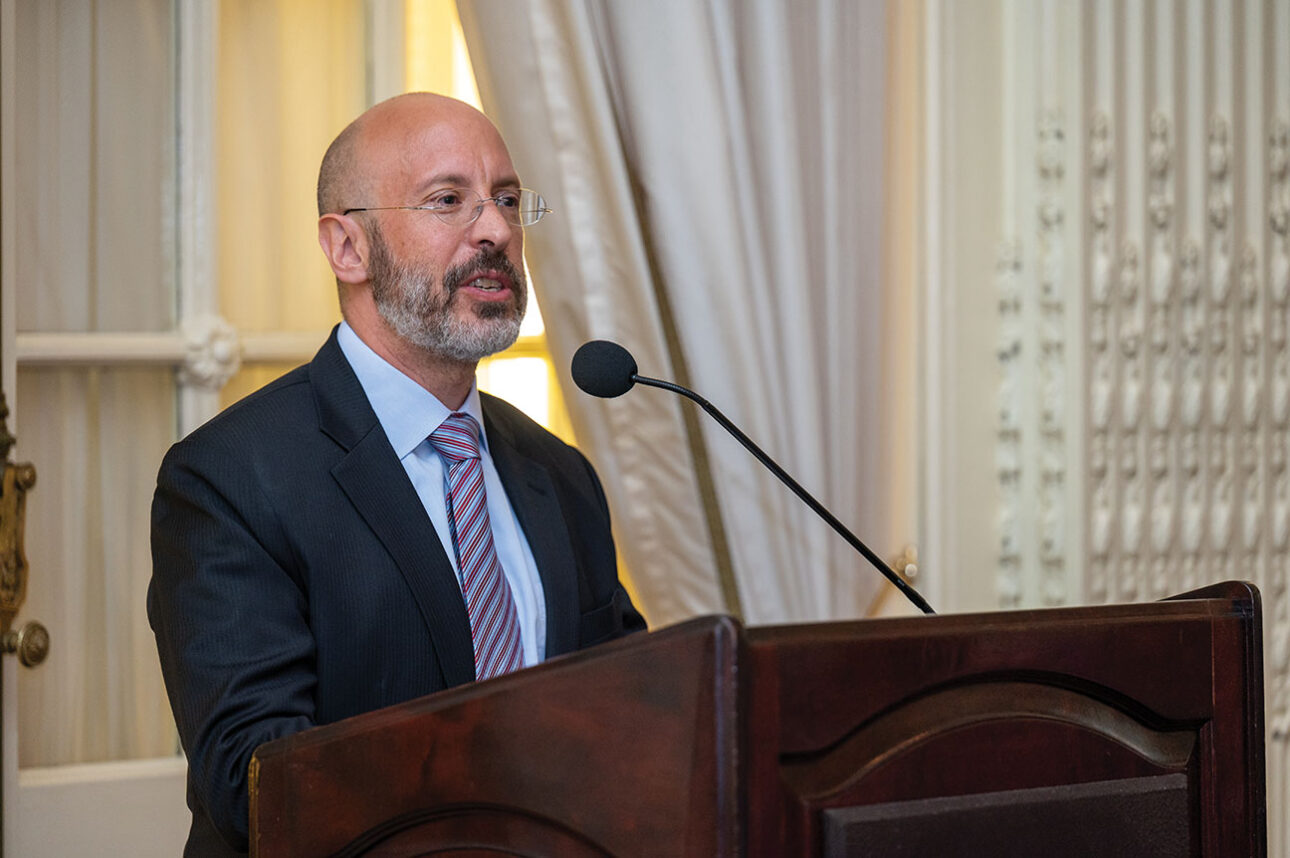 happyphoton/Getty Images
happyphoton/Getty Images I see that a revival of the rock opera “Tommy” is heading back to Broadway next year. The 1969 classic album by The Who is the story of a “deaf, dumb and blind kid” who becomes a pinball wizard and rockets to fame. The stage version of the concept album premiered in 1993. Why the revival now? Pete Townshend, the composer of the opera explains: “When I originally wrote ‘Tommy’ with The Who, nobody had ever written popular music songs about trauma, nobody talked about bullying … I can’t wait to see how this newly empowered show connects with younger Broadway audiences today. I hope the younger ones come, for they will identify in an entirely new and important way with Tommy’s tumultuous life.” No doubt the young audiences will resonate with the opening words of the climactic song in which Townshend, 54 years ago, foreshadowed a compelling theme of the current zeitgeist: “See me. Feel me. Touch me. Heal me.” “See me” — a plea for attention and connection, the primal need to be “seen.” The question remains, how do we learn to “see” another human being?
Coincidentally, two days before the announcement of the “Tommy” revival, a new book seeking to answer this query appeared: “How to Know a Person: The Art of Seeing Others and Being Deeply Seen,” by the journalist and author David Brooks. It is an insightful, practical book detailing the social skills required to build a friendship and create a community: “Being curious about other people, disagreeing without poisoning relationships, revealing vulnerability at an appropriate pace, being a good listener, knowing how to ask for and offer forgiveness, knowing how to host a gathering where everyone feels embraced, knowing how to see things from another’s point of view.” The process begins with how to really, truly “see” another person. Who doesn’t want to be “seen?” Being seen is a form of recognition that is essential for creating an ambience of welcome and creating a culture that places relationships and connection front and center. How, then, do we learn to “see” and “be seen?”
The Torah illuminates the art of seeing and welcoming others in this week’s parshat Vayeira. As always, the language of Torah reveals all. The first word of Genesis, Chapter 18, “vayeira,” is a form of the Hebrew word whose root, reish, aleph, hei, means “see.” “Vayeira eilav Adonai,”translated literally in passive tense as “the Lord appeared to him (Abraham),” but I like to read it as “the Lord came to see Abraham,” sitting in the entrance of his tent as the day grew hot. Why was God there? Rashi says God came to see how Abraham was healing after his self-circumcision at the age of 99, the first instance of bikkur cholim, visiting the sick, in the Bible. But there is something else afoot.
How are we to encounter another? Look up! Look up from your phone, from your book, from your screen, from your work. Lift your eyes to see the other and, Brooks notes, you will see your self.
Now, it’s Abraham’s turn to “see.” Again, the language is exquisite. “Va’yisa einav — “looking up” (literally “he lifted his eyes”) — “vayar– “and he saw”- three “anashim” standing near him. Sefaria translates “anashim” as “figures” although the literal translation is “men.” (Later, we learn they are angels/messengers from God who will craft the first baby reveal in history!) As if we don’t get it, the very next word is a repetition of the word “vayar” – “he saw.” In two sentences, we have the word for “see” three times. How are we to encounter another? Look up! Look up from your phone, from your book, from your screen, from your work. Lift your eyes to see the other and, Brooks notes, you will see your self.
As soon as Abraham has “seen” the three strangers, he runs – “va-yaratz” – to greet them. Bowing down, a sign of respect, he says, “My lords, matzati chein b’ainecha – if I find favor in your eyes,” or perhaps, “if you see me favorably,” do not go past your servant. He welcomes them embracing what the quality service literature calls, literally, “servantleadership.” Abraham offers some bread and water, but then “hurries” – va-y’maher – into the tent to tell Sarah, “ma-hari” – “hurry” – make some cakes. Then, he “runs” – rahtz – to the herd, picks a USDA choice calf and instructs their servant-boy “y’maher” – “hurry” – to prepare it. Abraham “under promised” bread and water, then “over delivered” a feast, and he did it running. Five words indicating the urgency of welcoming the guests. In “The Spirituality of Welcoming,” I called this “a text in a hurry,” in a hurry to emphasize the importance of seeing and welcoming others. So important, the Talmud deduces the following instruction: “Welcoming guests is greater than welcoming the Shechinah, God’s presence” (Shabbat 127a).
Circle back to the beginning of our text and we see that Abraham is in an encounter with God, but when the three anashim appear, he essentially says, “Excuse me God, I must go and greet my guests!” Abraham has done what Brooks recommends we do to see the other – stand in their standpoint – understand their needs, accompany them on their way, and give the gift of welcome and attention.
This is the core principle of a Relational Judaism: Every person we encounter has the spark of divinity within.
Why attend to people in this way? Brooks tells the story of a meeting in a diner with a “stern, imposing former teacher,” LaRue Dorsey, who came across to him as tough and intimidating. The picture he paints is of a person with what my Bubbie called, “a ferkripmte punim,” a sour face. A mutual friend, Jimmy Dorrell, walks into the diner and upon seeing them, runs toward their table, grabs Mrs. Dorsey by the shoulders and nearly screams: “Mrs. Dorsey, you’re the best! I love you! I love you!” Brooks writes: “I’ve never seen a person’s whole aspect transform so suddenly. The disciplinarian face Mrs. Dorsey had put on under my gaze vanished, and a joyous, delighted 9-year-old girl appeared. That’s the power of attention.” Brooks then reveals that Jimmy is a pastor who when he “sees a person – any person – he is seeing a creature with infinite value and dignity, made in the image of God. You may be an atheist, an agnostic, a Christian, a Jew or something else, but casting this kind of reverential attention is an absolute precondition for seeing people well.” This is the core principle of a Relational Judaism: Every person we encounter has the spark of divinity within.
We are not told how the three anashim, angels/messengers of God, reacted to being seen in this way, but I cannot help but think there were smiles on their faces as they revealed to these senior citizens they would give birth to a son. Having been seen deeply, they now fulfilled their divine mission by deeply seeing Abraham and Sarah, setting in motion the continuation of our ancestral line.
In this remarkable and highly recommended book, Brooks concludes that the ability to truly see others is important “if you are a teacher leading students, a doctor examining patients, a host anticipating the needs of a guest, a friend spending time with a friend, a parent raising a child, a spouse watching the one you love crawl into bed at the end of the day. Life goes a lot better if you can see things from other people’s point of view, as well as your own.” As Tommy would say, “see me!”
Dr. Ron Wolfson is Fingerhut Professor of Education, American Jewish University, author of “Relational Judaism.”























 More news and opinions than at a Shabbat dinner, right in your inbox.
More news and opinions than at a Shabbat dinner, right in your inbox.